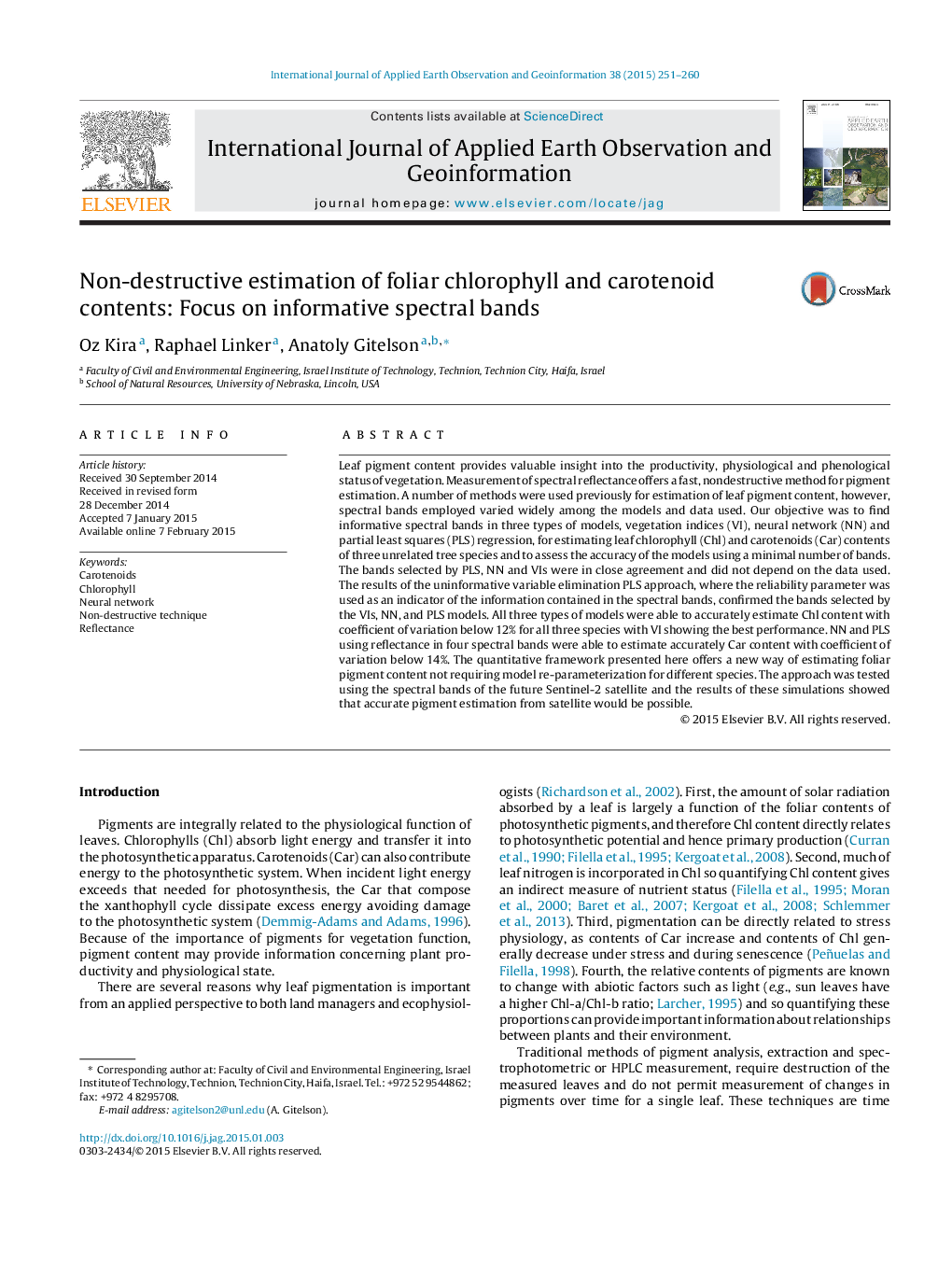| کد مقاله | کد نشریه | سال انتشار | مقاله انگلیسی | نسخه تمام متن |
|---|---|---|---|---|
| 6348691 | 1621820 | 2015 | 10 صفحه PDF | دانلود رایگان |
- Foliar chlorophyll and carotenoid contents were estimated in three tree species.
- Informative spectral bands for accurate pigment estimation were found.
- The bands selected by 3 different models were in good agreement.
- Rededge chlorophyll index was the most accurate for chlorophyll content estimation.
- Neural network model was able to accurately estimate total carotenoids content.
Leaf pigment content provides valuable insight into the productivity, physiological and phenological status of vegetation. Measurement of spectral reflectance offers a fast, nondestructive method for pigment estimation. A number of methods were used previously for estimation of leaf pigment content, however, spectral bands employed varied widely among the models and data used. Our objective was to find informative spectral bands in three types of models, vegetation indices (VI), neural network (NN) and partial least squares (PLS) regression, for estimating leaf chlorophyll (Chl) and carotenoids (Car) contents of three unrelated tree species and to assess the accuracy of the models using a minimal number of bands. The bands selected by PLS, NN and VIs were in close agreement and did not depend on the data used. The results of the uninformative variable elimination PLS approach, where the reliability parameter was used as an indicator of the information contained in the spectral bands, confirmed the bands selected by the VIs, NN, and PLS models. All three types of models were able to accurately estimate Chl content with coefficient of variation below 12% for all three species with VI showing the best performance. NN and PLS using reflectance in four spectral bands were able to estimate accurately Car content with coefficient of variation below 14%. The quantitative framework presented here offers a new way of estimating foliar pigment content not requiring model re-parameterization for different species. The approach was tested using the spectral bands of the future Sentinel-2 satellite and the results of these simulations showed that accurate pigment estimation from satellite would be possible.
Journal: International Journal of Applied Earth Observation and Geoinformation - Volume 38, June 2015, Pages 251-260
